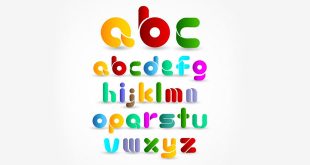Antimetaboles are figures of speech that you might have come across a dozen of times in course of a conversation or while reading a piece of literature, but just ignored it as any other phrase or idiomatic expression. An antimetabole refers to two unique arrangements of words in a particular …
Read More »Anticlimax Examples: Anticlimax for Students and Children
Surely, you’ve come across literary works or movies where an idea is being described and suddenly it transforms into something less significant. By definition, anticlimax terms/phrases are figures of speech in which statements or ideas descend according to their importance. To put it in simpler words, a serial arrangement of …
Read More »Antecedent Examples: Antecedent for Students and Children
There are certain sets of rules in grammar that you have to follow in order to ensure right usage of the language. Antecedents, with which you might be quite familiar, assist you in framing sentences on your own. Antecedents can be understood as words, phrases or even clauses that have …
Read More »Anastrophe Examples: Anastrophe for Students and Children
After reading any of Shakespeare’s works, have you ever felt like his words are being mixed up? Yes, this is the use of the figure of speech called anastrophe. Derived from the Greek word, anastrophe means ‘turning back or about’. It can be defined as the reversal of the normal …
Read More »Anaphora Examples: Anaphora for Students and Children
“Mad world! Mad kings! Mad composition!” Recognize the emphasis laid in the previous sentence? The term ‘anaphora’ originated from the Greek word meaning ‘carrying back’. It can be defined as a repetition or a rhetorical device where the same word or phrase is repeated at regular intervals, which could be …
Read More »Analogy Examples: Analogy for Students and Children
Sometimes words and phrases can prove inept in conveying the exact depth of our expression. This doesn’t mean that our grasp of the language is weak. It is that people have an innate tendency to understand the true meaning only when one concept has been compared to another. When someone …
Read More »Anadiplosis Examples: Anadiplosis for Students and Children
Anadiplosis – the difficulty in pronouncing the word itself scares a normal reader. But it is not a big deal – it is a stylistic device, often used and utilized by politicians in their essays and even by CEO’s in their sales pitches in order to intensify the curiosity and …
Read More »Allusion Examples: Allusion for Students and Children
Allusions probably sound unfamiliar but, as a matter of fact, you would have definitely heard its usage. Do you remember watching movies where characters refer to characters in other movies just to make a point? Well, this is a form of allusion. An allusion, according to M. H. Abrams, is …
Read More »Alliteration Examples: Alliteration for Students and Children
Alliteration is a literary device that emphasizes on repetition of a particular consonant in the first syllables in a series of words. It is important to know that in alliteration, the sound of the words matter the most. It is extensively used in literature, particularly in poetry. Alliteration is like …
Read More »Allegory Examples: Allegory for Students and Children
Allegory comes from the Greek word ‘allegoria’ that means ‘speaking otherwise’. It is often used to describe stories in verse or poetry that typically have a double meaning. The act of interpreting allegories is called allegoresis. These figures of speech fall into two categories: historical and abstract. There are several …
Read More » Class Notes NCERT Solutions for CBSE Students
Class Notes NCERT Solutions for CBSE Students

